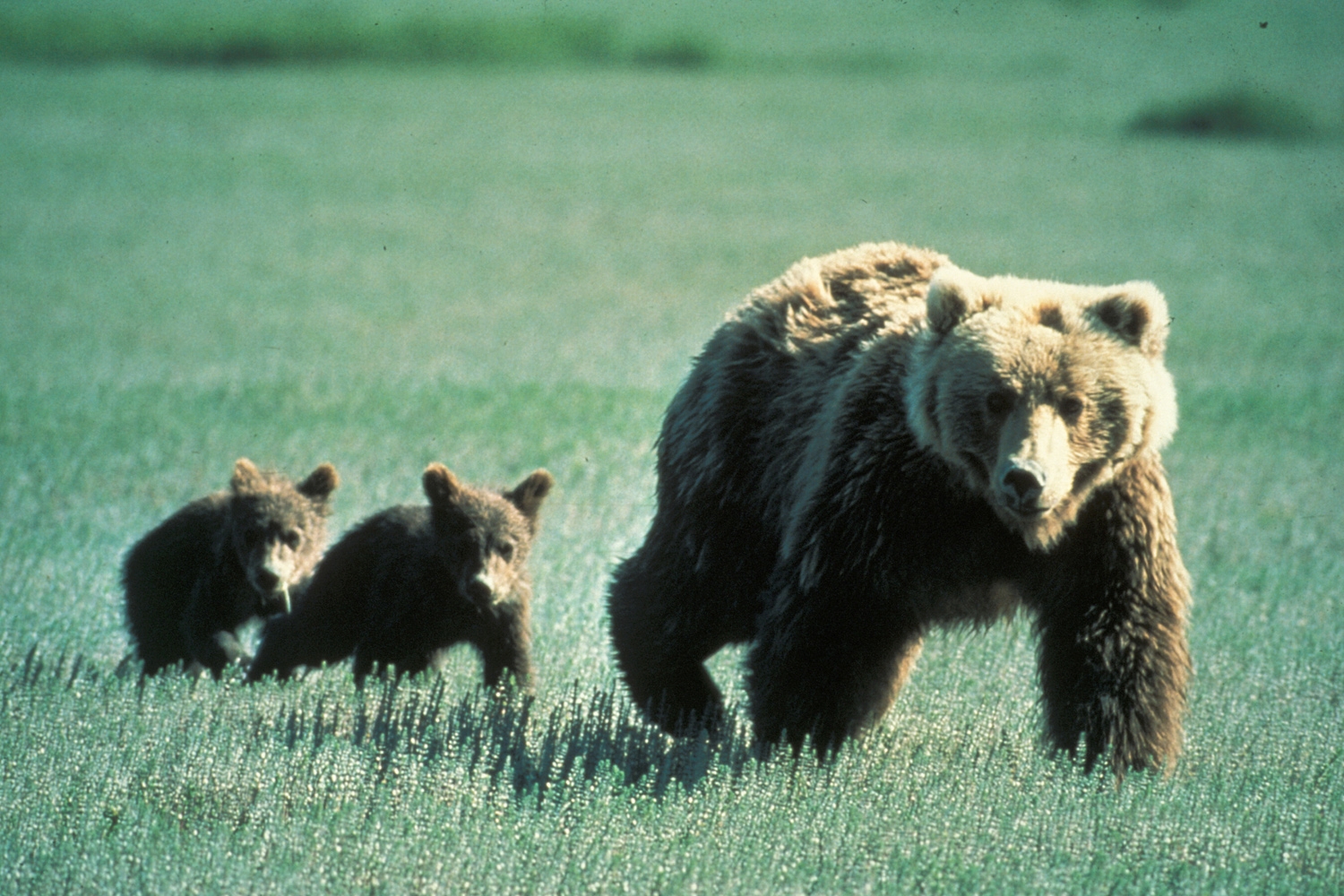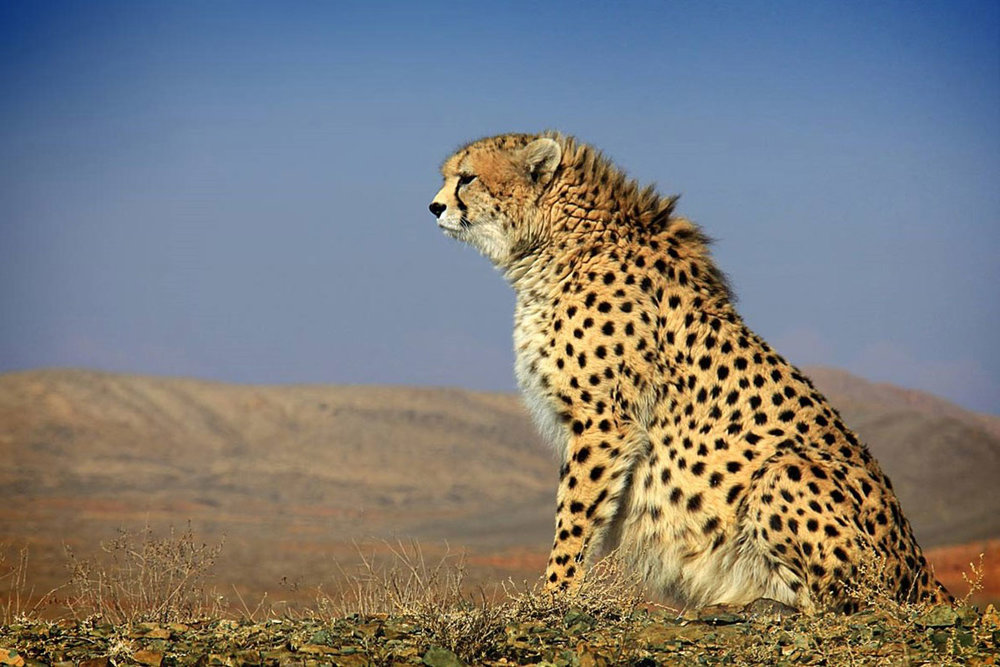 |
| A pride of Asiatic lions |
In the past two months, the
Asiatic lion made headlines following a
canine distemper outbreak which killed 27 lions in and around
Gir Forest National Park. The incident sparked arguments from
conservationists and wildlife specialists like
Dr. Ravi Chellam, who reminded about the necessity to
translocate the lions outside
Gujarat and touched on a similar catastrophic event that nearly wiped out 30 percent of the
lion population in Africa's
Serengeti. However, the
government of Gujarat continued to maintain its ground by enlisting veterinarians, experts, and technicians from across India and abroad to treat the infected lions. Now, the government is taking a step further with a recent announcement of new plans in the lion conservation. One of the initiatives is building a highly developed hospital for the lions and other wildlife in Gir. According to Gujarat Forest Minister
Ganpat Vasava, the hospital will be built at a cost of
Rs. 100
crore and will have a laboratory to carry out various tests to determine the cause of diseases among the animals. He further added that Gujarat
Chief Minister Vijay Rupani authorized Rs. 350 crore for enforcing various initiatives for the longstanding conservation of lions in the state. Rajiv Kumar Gupta, additional chief secretary of
Gujarat Forest Department, indicated that Chief Minister Rupani has agreed to establish an independent veterinary organization for which approximately 120 experts and technicians will be enlisted in order to run the hospital and laboratory. Minister Vasava further added that other measurements will include distribution of
drones to keep track of the lions' movements, setting up a camera system in Gir Forest, constructing eight new rescue centers, deployment of 33 rapid response teams in the forest, and enlistment of 100 "trackers" to keep watch on the lions. In addition, four new breeding centers for animals like
spotted deer,
sambar, and
nilgai to bolster the lions' prey base will be established. Furthermore, a plan to create extensive grasslands for lions inside the sanctuary has been announced, along with instituting a committed ambulance service and a 24-hour helpline for obtaining crucial information about lions from the public. There is even news about five new
safari parks to be built in Gujarat. These include a lion safari park near
Gandhinagar, a
tiger safari near the town of
Kevadiya in
Narmada district, and
leopard safari parks in
Bhavnagar,
Dang, and
Surat districts. Lastly, Chief Minister Vasava had even assigned the officials to outline a plan to save Gujarat's endangered birds such as
vultures,
lesser floricans, and
great Indian bustards.
.jpg/1920px-Canine_Distemper_Virus_Cytoplasmic_Inclusion_Body_(Blood_smear%2C_Wright's_stain).jpg) |
| Canine distemper virus |
I'm really proud and hopeful that the government of Gujarat has announced various initiatives for the conservation of Asiatic lions and other wildlife in the state. It goes to show that the government is very dedicated to the safety and well-being of both the lions and other wild animals in Gujarat. However, I also believe it is crucial to combat the canine distemper epidemic that has claimed lives of 27 lions two months ago. In order to do that, populations of
foxes,
jackals,
wolves, and even
stray dogs in Gujarat should be surveyed and thoroughly examined for the canine distemper virus and treated accordingly. This would help prevent further spread of the disease to lions and other animals. In addition, I firmly believe that the lion safari park should be built not just for public-viewing but with strong emphasis on conservation. That is, it should specialize in
captive breeding of the Asiatic lion in order to keep the population healthy and to help in the
reintroduction of lions outside Gujarat. I strongly agree that the lions are part of Gujarat's heritage, but we must not forget that they once roamed throughout
central,
northern, and northwest India in states like
Madhya Pradesh,
Bihar,
Rajasthan,
Haryana,
Uttar Pradesh, and
Punjab. This makes the lions part of India's heritage, along with the tiger. It would not be wise to simply take wild lions out of Gujarat and release them in any of these states because then they would end up struggling to survive in unknown lands which they are not generally used to. Some of the factors that could influence the survival of wild lions when they are released outside Gujarat include climatic conditions and change of terrain which would probably make it difficult for them to get around and ultimately spell disaster for them. This is why it is crucial to conduct captive breeding programs for the lions and release them into their former home range across India. To do so, I believe it is important to look at and learn from conservation success stories like the
Arabian oryx whose numbers recovered via captive breeding and reintroduction into the wild. Also, before making any reintroduction attempt, it is compulsory that captive-bred lions should be provided with a great deal of
enrichment to help stimulate their survival instincts which would help them when they are released into the wild and start living on their own. Furthermore, I suggest that the reintroduction of Asiatic lions across India should begin with a trial run in which some number of lions should be placed in a
protected area and closely monitored before making any decision to either reintroduce more lions outside Gujarat or give up the reintroduction project. A similar approach should also be implemented when setting up the tiger safari park near Kevadiya. Tigers once ranged throughout the
North,
Central, and
South Gujarat districts that border Rajasthan, Madhya Pradesh, and
Maharashtra before becoming extinct. They need to be reintroduced in their former Gujarati home range in order to revitalize the state's wildlife. Just because one tiger was
spotted somewhere in South Gujarat does not mean that the species will be able to recolonize the state as a whole in a matter of months. Finally, the leopard safari parks should focus on the conservation of India's leopards which includes conducting educational outreach programs directed at local communities in an effort to mitigate human-leopard conflicts across Gujarat and India.
View article here



.jpg/1920px-Canine_Distemper_Virus_Cytoplasmic_Inclusion_Body_(Blood_smear%2C_Wright's_stain).jpg)





.jpg/1920px-Jellyfish_Lake_aerial_(March_2008).jpg)